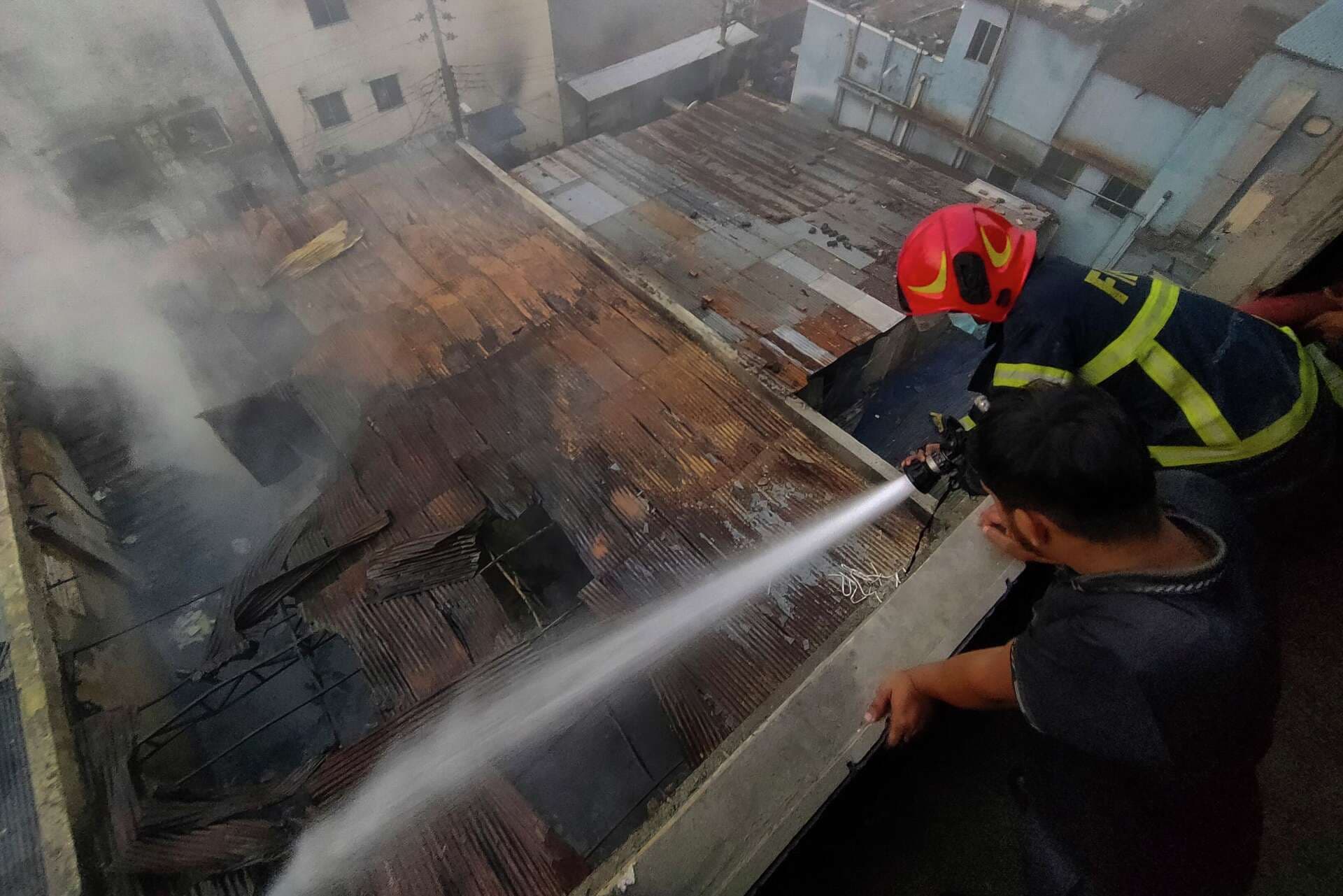Loading News Article...
We're loading the full news article for you. This includes the article content, images, author information, and related articles.
We're loading the full news article for you. This includes the article content, images, author information, and related articles.
A devastating fire at a garment factory and an adjacent chemical warehouse in Dhaka has claimed at least 16 lives, highlighting persistent safety failures in Bangladesh's crucial ready-made garment sector.

At least 16 people have died after a massive fire engulfed a garment factory and an adjacent chemical warehouse in the Mirpur area of Dhaka, Bangladesh, on Tuesday, October 14, 2025. Officials warn that the death toll could rise as search and rescue operations continue. The incident has once again brought to the forefront critical concerns about industrial safety standards in a country heavily reliant on its garment industry.
Distraught relatives gathered outside the four-storey factory, desperately searching for missing loved ones, some clutching photographs. Fire service officials reported that the 16 bodies recovered from the second and third floors of the garment factory were burned beyond recognition, necessitating DNA testing for identification.
The blaze, which reportedly started around 11:45 AM local time (8:45 AM EAT) on Tuesday, was brought under control in the factory after approximately three hours. However, the fire at the adjacent chemical warehouse continued to burn into the evening.
According to Fire Service and Civil Defence Director Tajul Islam Chowdhury, the cause of the fire is not yet known. Eyewitnesses indicated that the chemical warehouse stored highly flammable materials such as bleaching powder, plastic, and hydrogen peroxide, which can intensify fires and release toxic fumes.
Authorities suspect that the victims died from inhaling toxic gas. Fire service officials also revealed that both the garment factory and the chemical warehouse were operating illegally, lacking proper trade licenses, fire safety clearances, or occupancy certificates. Police and military officers are actively searching for the owners of both establishments.
This incident is the latest in a series of industrial accidents that have plagued Bangladesh's ready-made garment (RMG) sector, the world's second-largest after China. The industry employs approximately 4 million workers, predominantly women, and contributes nearly $40 billion (approximately KES 5.8 trillion) annually to the country's exports, primarily to the United States and Europe.
Lax safety standards, poor infrastructure, and inadequate enforcement of building codes have been consistently blamed for these tragedies. In 2021, a fire at a food and drink factory killed at least 52 people. One of the country's worst industrial disasters occurred in 2012 at the Tazreen Fashions garment factory, where 112 workers died, followed by the Rana Plaza building collapse in 2013, which claimed over 1,100 lives.
Following the Rana Plaza disaster, international pressure led to the establishment of agreements like the Accord on Fire and Building Safety in Bangladesh (superseded by the International Safety Accord in 2021). These initiatives aimed to implement independent safety inspections, public disclosure of reports, and financial commitments from brands to ensure remediation.
Despite these efforts, challenges persist. A May 2024 report by the RMG Sustainability Council (RSC) indicated that about 20% of Bangladesh's 3,500 garment factories still do not meet fire, electrical, and structural safety standards. The report highlighted that remediation efforts have slowed due to financial pressures, lack of coordination, and differing standards among stakeholders.
The latest fire in Mirpur underscores the urgent need for stricter enforcement of safety regulations and accountability for those who operate illegal and unsafe facilities. Key questions remain regarding how the illegal chemical warehouse and garment factory were allowed to operate without the necessary permits and safety measures, and what immediate actions will be taken against the owners.
The interim government head of Bangladesh, Muhammad Yunus, has expressed deep sorrow over the incident and urged authorities to conduct a thorough investigation and provide support to the victims and their families.
As investigations proceed, the focus will be on ensuring justice for the victims and implementing robust measures to prevent similar tragedies. The international community and labour rights organisations will be closely watching Bangladesh's response to this latest disaster, urging for renewed commitment to worker safety in its vital garment sector.
Keep the conversation in one place—threads here stay linked to the story and in the forums.
Other hot threads
E-sports and Gaming Community in Kenya
Active 6 months ago
Popular Recreational Activities Across Counties
Active 6 months ago
The Role of Technology in Modern Agriculture (AgriTech)
Active 6 months ago
Investing in Youth Sports Development Programs
Active 6 months ago